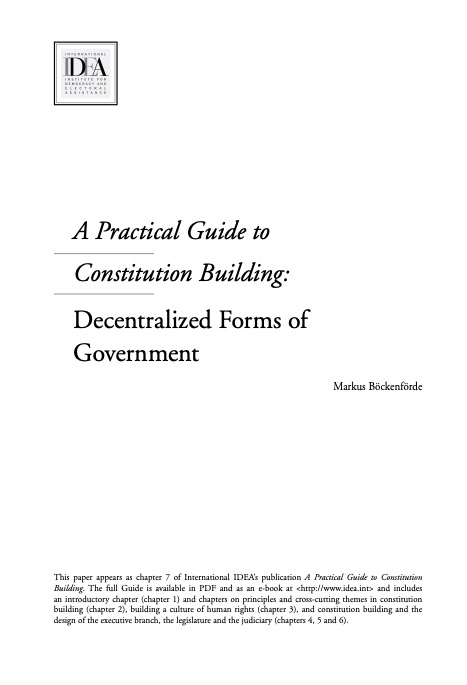
A Practical Guide to Constitution Building: Decentralized Forms of Government
This paper appears as chapter 7 of International IDEA’s publication A Practical Guide to Constitution Building. It focuses on decentralization. The paper starts by defining decentralization as a territorial concept, or the dispersal of governmental authority and power away from the national centre to other institutions at other levels of government or levels of administration. It then identifies the two main objectives of decentralization as increasing efficiency in providing governmental services, and providing greater representation to minority groups. Next, the paper discusses the components of decentralization, which it categorizes as either formal or substantive. The report then highlights the importance of national and regional context with regard to the success or failure of decentralization, and finally, it addresses specific design options. In discussing these options, the paper identifies the following design questions: the number of levels of government, determination of the depth of decentralization (meaning identifying the powers that may be dispersed to lower levels of government), and the legal safeguards for decentralized governments (meaning the legal checks and balances concerning who has the power to change the system of decentralization).
